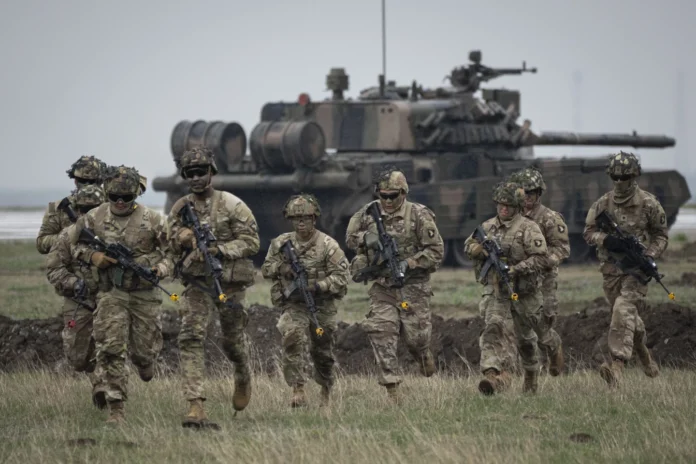BRUSSELS (AP) — A senior NATO military officer affirmed on Monday that Russia’s armed forces, despite suffering setbacks, remain a formidable adversary in the ongoing conflict in Ukraine. Admiral Rob Bauer, Chair of the NATO Military Committee, cautioned against underestimating Russia’s ability to rebound, stating, “They might not be 11 feet tall, but they are certainly not 2 feet tall.”
In response to the evolving situation, U.S. President Joe Biden and NATO leaders are poised to endorse a significant overhaul of the alliance’s military plans during an upcoming summit in Vilnius, Lithuania. This revamp represents the most substantial restructuring of NATO’s strategies since the Cold War and is designed to address the potential escalation of the conflict by Moscow.
Notably, NATO does not supply weapons or ammunition to Ukraine to avoid being drawn into a broader conflict with Russia, a nuclear-armed nation. Nevertheless, the alliance is intensifying the defense of member countries neighboring Russia, Ukraine, and Belarus. Approximately 40,000 troops are on standby from Estonia to Romania, with around 100 aircraft and 27 warships deployed in the region, numbers that are projected to increase.
Under the new plans, NATO aims to have up to 300,000 troops ready to deploy to its eastern flank within 30 days. The territories are divided into three zones: the high north and Atlantic area, a zone north of the Alps, and another in southern Europe. Admiral Bauer emphasized that NATO’s preparations are based on Russia’s military strength before President Vladimir Putin launched the war in Ukraine 17 months ago. He noted that while the conflict has depleted Russia’s ground forces, its navy and air force remain potent.
Bauer disclosed that approximately 94% of Russia’s ground forces are currently engaged in the Ukrainian conflict. He emphasized that despite their caution around NATO, Russia remains a significant threat, particularly in the maritime, air, and space domains, as well as its nuclear capabilities.
Last month, an uprising by Wagner mercenaries in Russia raised security concerns in Estonia, Latvia, Lithuania, and Poland, especially after their leader, Yevgeny Prigozhin, sought refuge in Belarus. Lithuanian President Gitanas Nauseda warned that neighboring countries would face an increased danger if the Wagner Group deployed its operatives near their borders.
Lithuania has been advocating for a permanent NATO presence on its territory, and Germany has expressed readiness to station soldiers there if requested. However, NATO currently sees no immediate threat originating from Belarus, though it remains vigilant and adaptable to changing circumstances.
NATO’s recent “force generation conference” involved the participation of all 31 member countries, aiming to assess the alliance’s available troops and equipment for potential responses to a Russian attack. While officials remained tight-lipped about specific details for security reasons, they expressed optimism about the outcome. Nevertheless, some experts and diplomats within NATO have raised concerns about member countries’ willingness to commit 300,000 troops to standby.
Regarding the execution of the plans, Admiral Bauer welcomed the anticipated commitment by President Biden and his counterparts to increase defense spending, which would facilitate the provision of necessary equipment for commanders. In 2014, NATO committed to allocating 2% of GDP to military budgets by 2024. During the summit on July 11-12, leaders will establish the 2% threshold as a minimum spending requirement rather than a maximum target.
As tensions persist between NATO and Russia, the alliance remains resolute in its efforts to enhance preparedness and deter potential aggression. The upcoming summit in Vilnius is poised to shape the future trajectory of NATO’s military plans, signaling a collective commitment to safeguarding member states against Russia’s persistent challenges.






